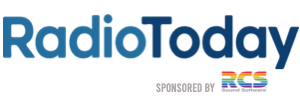The way people in the UK listen to radio has changed dramatically in the past decade.
Once dominated by analogue frequencies, the airwaves are now part of a much broader digital ecosystem. Listeners no longer rely solely on FM or AM radios; instead, they tune in through DAB sets, smart speakers, mobile apps, and even their cars’ connected dashboards.
This shift from DAB to digital is more than just a technical transition—it reflects changing lifestyles, evolving technology, and new audience expectations. As broadcasters adapt, the industry continues to reinvent itself for a digital-first future.
The Growth of DAB and Why It Still Matters
Digital Audio Broadcasting (DAB) has been one of the UK’s great broadcasting success stories. It offered better sound quality, greater station choice, and additional features like programme guides and scrolling text. DAB adoption accelerated during the 2010s, with millions of homes and cars equipped with receivers.
Today, DAB still holds a strong position in the listening landscape. According to RAJAR reports, a significant percentage of UK households use DAB as their primary listening method. It has become the default for many national and regional stations, ensuring broad accessibility.
However, even as DAB continues to be relevant, it is now part of a much more diverse ecosystem. Listeners are increasingly embracing internet-powered options, which provide flexibility and global reach.
Streaming, Smart Speakers, and the Digital Shift
The rise of streaming platforms and smart devices has created a major change in listening habits. Apps like BBC Sounds, TuneIn, and station-specific platforms have given audiences access to live radio and podcasts at their fingertips. For younger listeners, radio is often experienced through a smartphone rather than a traditional set.
Smart speakers such as Amazon Echo and Google Home have further accelerated this trend. A simple voice command can summon a favourite station, blurring the lines between radio, music streaming, and other digital entertainment. This convenience is shaping a new generation of listeners who expect content to be available instantly, wherever they are.
Broadcasters have responded with digital-first strategies: creating exclusive online streams, offering catch-up shows, and expanding podcast networks. The flexibility of digital delivery means that radio is no longer limited by spectrum availability—it can be as broad and diverse as audiences demand.
Radio, Lifestyle, and the Future of Entertainment
Radio has always been more than just a medium for music and news; it’s a cultural companion that fits into people’s daily routines. What’s different now is the way it integrates with broader digital lifestyles. For example, listeners might start their day with a DAB morning show, switch to a mobile app during the commute, and ask a smart speaker to play a podcast in the evening.
The convergence of entertainment platforms also opens doors to new partnerships. Radio increasingly competes and collaborates with streaming services, video platforms, and even online gaming. It’s not unusual for broadcasters to explore sponsorships or cross-promotions with sectors far beyond traditional advertising. In some cases, this includes the digital gaming and betting industries, where terms like crypto casino highlight how financial technology and online entertainment are blending. While such references remain niche within radio itself, they illustrate the wider digital ecosystem in which modern radio operates.
For the industry, the challenge lies in maintaining radio’s trusted, human connection while embracing the possibilities of a global digital audience. Live voices, local stories, and cultural relevance remain the foundation—but the delivery methods are more flexible and innovative than ever before.
Final Thoughts
The journey from DAB to digital is not about replacing one format with another. Instead, it’s about expanding the ways people can connect with radio. The UK audience now enjoys more choice, convenience, and interactivity than at any point in broadcasting history.
As technology continues to evolve, the radio industry must balance tradition with innovation. DAB still plays an important role, but the future is digital, multi-platform, and deeply integrated into modern lifestyles. For listeners, that means more content, more flexibility, and a stronger connection to the voices and stories that shape their everyday lives.

